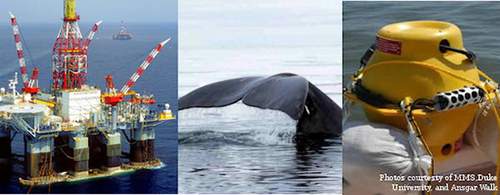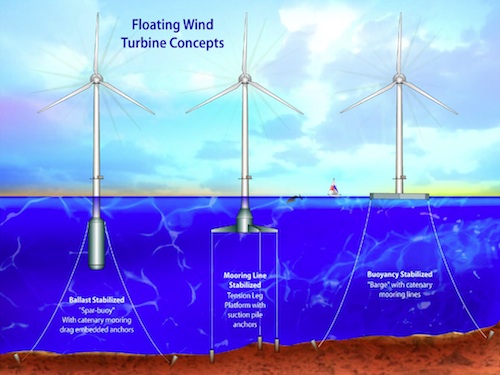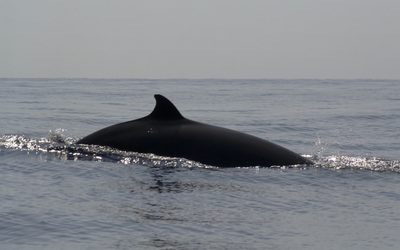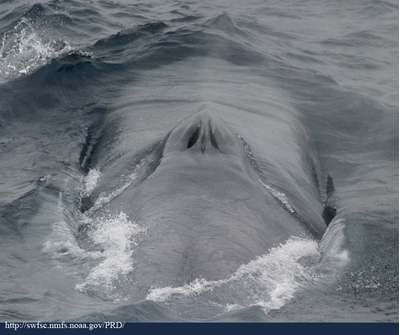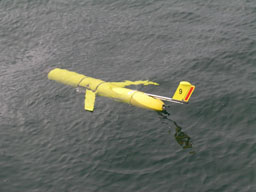During the 2004 RIMPAC multinational navy exercises in Hawaii, a pod of over 150 melon-headed whales appeared in a shallow bay, far from their normal offshore habitat. Their agitation was obvious, and one young whale beached and died. When it became apparent that sonar training was taking place offshore that day, the Navy initially said that the transmissions did not begin until later in the day, but later confirmed that some early-morning calibration of the sonar took place. A NOAA investigation determined that sonar was the “likely, if not probable” cause for the stranding; this statement was clarified later by NMFS, to affirm that they were not sure of the link. On the same day, another pod of melon-headed whales had appeared in a shallow bay on the western Pacific island of Rota, spurring speculation that the full moon may trigger this species to undertake feeding excursions into shallow bays, with the Hawaii pod subsequently getting disoriented and panicked (perhaps due to the sonar sounds offshore). The similarity of the incidents led many observers (including AEI) to be less sure that the Hanalei event could be tied primarily to a reaction to Navy sonar.
A study in the July issue of Marine Mammal Science (and summarized here by ScienceNow), however, puts the lunar theory to rest. NOAA researcher Robert Brownell examined the two incidents closely, along with 21 other mass strandings of melon-headed whales. It turns out that the western Pacific population of melon-headed whales often retreat into shallow bays to rest; this trait is not shared by the whales around Hawaii. “That is their normal behavior,” says Brownell. In contrast, the whales’ actions in Hawaii were “identical to those that precede mass-strandings” of beaked whales, with pods swimming agitatedly in tight circles, spy-hopping (rising vertically out of the water), tail-slapping, and vocalizing.” And, the timing of other strandings showed no correlation with full moons or any part of the lunar cycle. Figuring out what caused the Kauai whales to strand is important, Brownell says, because so far only mass strandings of beaked whales have been conclusively linked to the Navy’s use of sonar. “It’s a big debate,” says Brownell. “Why are only beaked whales affected and not others? Well, other species are.” Brownell says that melon-headed whales probably aren’t affected as often by naval sonar exercises because, unlike beaked whales, they usually hang out far from shore. He thinks “it was purely a coincidence” that melon-headed whales were near Kauai the morning the Navy ran its sonar test. “If any other cetacean species had been going by that morning, the same thing would have happened,” he says. (Ed. Note: this statement is somewhat more speculative than scientists are usually willing to make…while sonar has induced agitated reactions in orcas who did not strand, beaked whales have not been observed prior to strandings. And, the final statement is likely to drive other scientists crazy, thanks to its likely unwarrented certainty. Still, the main point holds true: reactions to sonar are not limited to beaked whales, and this incident is becoming one of our clearest indications of this; other species have died in some multi-species strandings that are considered likely sonar-related by many non-Navy observers, and this summer Minke whales were seen racing away from sonar-emitting ships in the UK)
The U.S. Navy disputes Brownell’s paper. Chip Johnson, a Navy marine scientist, spun the news as well as can be expected, saying that the new study only “contributes more uncertainty” about what happened to the melon-headed whales that morning, presumably because it highlights previously unknown behavioral differences between different populations. It does, however, seem to put to rest the idea that the two events that day, 6000 miles apart, represent a similar behavioral response to prey or the moon, since the whales in Rota were resting, and the ones in Hawaii were clearly agitated. Spokesmen from various environmental organizations say this study helps move the Hanalei Bay event more clearly into the sonar-induced category; Michael Jasny of NRDC said of the uncertainty raised by the two events, “It’s really no longer an issue. The question is now, ‘What can be done to fix the problem?'”


